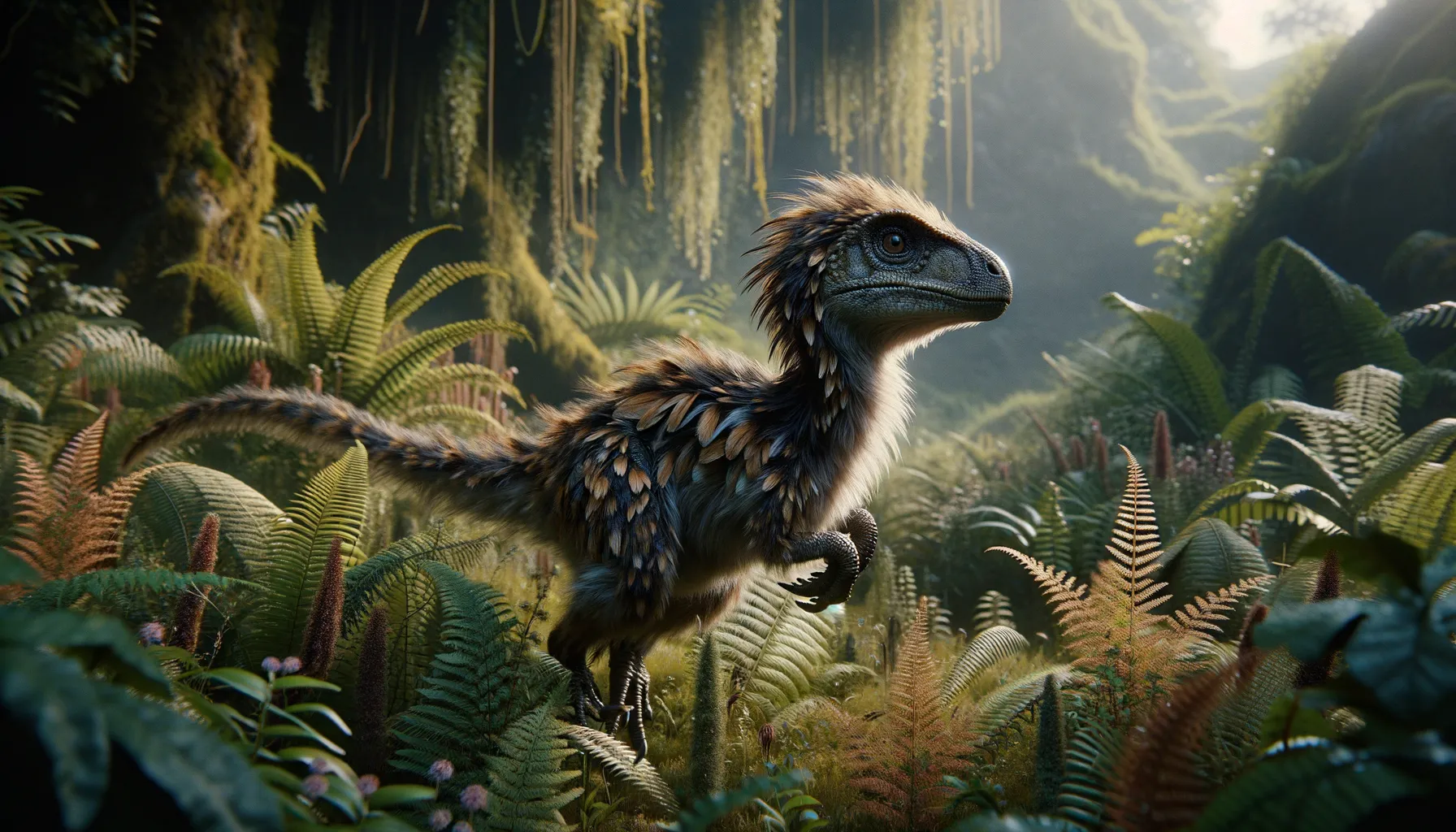
Juravenator
Small but fierce, agile Late Jurassic hunter.
Period
Jurassic
Length
Approximately 0.75 to 1 meter long.
Height
About 0.5 meters at the hip.
Weight
Approximately 10 kg.
Juravenator was a small theropod dinosaur that lived during the Late Jurassic period. Known for its relatively small size, it was an agile predator likely covered in feathers, which might have provided insulation and aid in camouflage. The discovery of Juravenator has provided important insights into the diversity and ecology of small theropods in Europe during this era.
Diet
Juravenator was carnivorous, likely preying on small animals, including insects, lizards, and possibly small mammals. Its diet helped it thrive in its environment, allowing it to hunt efficiently in its ecological niche.
Hunting
It likely hunted using stealth and speed, with its quick movements enabling it to surprise prey. Its hunting strategy might have involved brief chases or ambush tactics, aided by its ability to blend into its surroundings.
Environmental challenges
Juravenator lived in a time and place where environmental dynamics were challenging, with fluctuating weather conditions affecting food availability. Predators larger than itself posed constant threats, influencing its survival strategies. Adaptation to these challenges is evident in its developed agility and its ability to find food in diverse ecological contexts.
Speed
Moderately fast, using its legs for quick sprints.
Lifespan
Estimated to be around 10 to 20 years.
First discovery
Discovered in 1998 in Bavaria, Germany.
Fun Facts
- Juravenator lived about 150 million years ago during the Late Jurassic period.
- It was a small theropod dinosaur, growing to about 80 centimeters long, roughly the size of a modern chicken.
- Juravenator was discovered in what is now Germany, making it part of the rich fossil record of the Jura Mountains.
- This dinosaur's name means 'Jura hunter', reflecting its likely role as a small predator in its ecosystem.
- One of the most remarkable discoveries about Juravenator was that it had both scales and filament structures, suggesting it might have been in a transitional phase between scales and feathers.
- Fossil evidence shows that Juravenator thrived in a coastal environment, indicating it could have hunted small aquatic creatures.
- Despite being small, Juravenator was an important piece in understanding the evolution of feathers in theropod dinosaurs.
Growth and Development
Juravenator displayed typical growth patterns seen in small theropods, moving from hatchling stages to becoming more independent as juveniles. Its growth was probably influenced by environmental conditions, food availability, and predation pressures. This helped it develop survival instincts crucial for navigating its Jurassic environment.
Habitat
Juravenator inhabited forested regions with dense vegetation, providing ample cover for hunting and evading threats. Its environment was rich in biodiversity, playing a crucial role in the ecological balance of its habitat. Such habitats enabled numerous small theropods to coexist, each occupying specific ecological niches.
Interaction with other species
Juravenator interacted with a diverse range of species within its habitat, often competing with other small theropods for food resources. It also had to be vigilant against larger predators, shaping its behavior and survival strategies. These interactions reflect the complex ecological web of the Late Jurassic.
Natural lifespan
Juravenator likely had a natural lifespan of 10 to 20 years.
Reproduction
Juravenator likely reproduced by laying eggs, similar to other theropods. Nesting habits might have included selecting well-hidden locations within dense vegetation to protect the eggs from predators. Parental care, if present, would have helped in the survival of offspring in a competitive environment.
Social behaviour
Juravenator might have exhibited solitary or pack behavior, common among small theropods. Social interactions could involve cooperation in hunting or territorial disputes. The extent of its social behavior remains speculative, but cooperative hunting could have increased its efficiency in capturing prey.
Fossil locations
Fossil remains of Juravenator were initially discovered in limestone deposits in Germany, which provide rich insights into the Late Jurassic period's biodiversity. These locations are significant paleontological sites that have yielded numerous important finds, enhancing our understanding of European dinosaurs.
